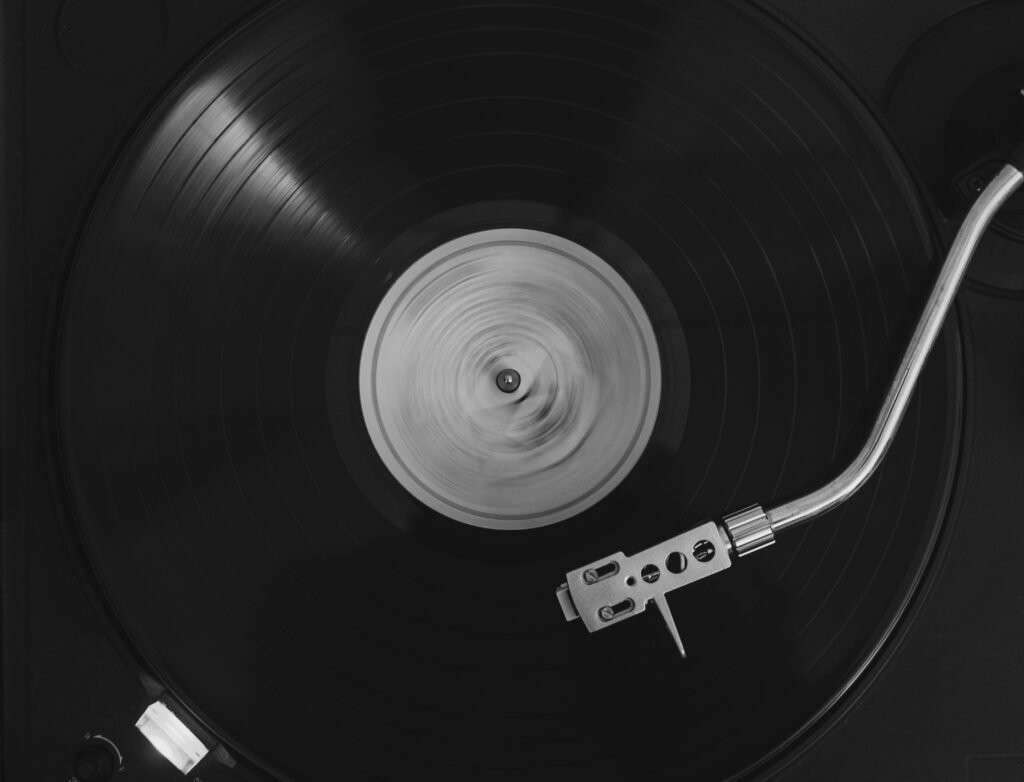Prelude to Ecstasy, the highly anticipated debut album from The Last Dinner Party, marks a significant moment both for the band and the broader indie rock landscape. Emerging from a flurry of buzz around their live performances and early singles like “Nothing Matters” and “Sinner,” this record consolidates their baroque-pop aesthetic with an opulent, theatrical flair. While the band—led by frontwoman Abigail Morris—had already built a reputation for lavish performances, Prelude to Ecstasy expands upon these dramatic tendencies, weaving together themes of desire, power, and pain.
Artistic Intentions
Stylistically, the album stands as a culmination of the band’s work so far, echoing their earlier glam-rock inclinations while also pushing into more grandiose, progressive territory. There are clear nods to the 70s rock theatrics of Queen and Sparks, alongside modern indie influences such as Florence + The Machine and Arctic Monkeys. Yet, The Last Dinner Party manages to forge its own identity, particularly through the band’s complex arrangements and Morris’s commanding vocal performances. Tracks like “Burn Alive” and “Caesar on a TV Screen” showcase this dynamic with haunting strings, church bells, and swooping guitar solos that often feel cinematic in scope.
Artistically, the band seems intent on exploring narratives around feminine power and vulnerability. Morris’s lyrics tackle everything from self-inflicted suffering to societal pressures, often delivered with a sharp, ironic edge. Songs like “The Feminine Urge” and “Sinner” capture a sense of rebellion against both internal and external constraints, while others, like “My Lady of Mercy,” subvert religious iconography in provocative ways. Through this lens, Prelude to Ecstasy becomes not just an album but a statement—one that demands attention with its combination of intricate musicianship and biting social commentary.
Sonic Exploration

The production quality of Prelude to Ecstasy is unmistakably polished and opulent, with producer James Ford (known for his work with Arctic Monkeys and Florence + The Machine) lending a sheen that amplifies the album’s theatrical grandeur. Rather than opting for the raw, lo-fi aesthetics that have permeated some recent indie releases, Prelude to Ecstasy thrives on a crisp, clean sound that complements its richly orchestrated arrangements.
Each track feels meticulously crafted, from the shimmering highs of the guitars to the rumbling low end of the bass and drums, evoking a sense of grandeur without becoming overwhelming. The sonic clarity allows intricate details—like the harp flourishes, strings, and church bells in the album’s opening prelude—to stand out, setting a lush stage for the rest of the album.
Musical Arrangements
In terms of musical arrangements, The Last Dinner Party takes a maximalist approach, blending classical instrumentation with glam rock bombast. Strings, piano, and organ are interwoven with bold, distorted guitars and thundering percussion, resulting in a soundscape that feels cinematic. Tracks like “Caesar on a TV Screen” and “Sinner” highlight this with complex, multi-layered arrangements that shift dramatically in tone and intensity. For example, “Caesar on a TV Screen” starts with a torch-song sultriness before exploding into a Wagnerian crescendo, while “Burn Alive” juxtaposes Morris’s soaring vocals with martial drums, evoking the intensity of a Kate Bush anthem.
Genre Elements
Genre-wise, Prelude to Ecstasy draws heavily from glam rock, prog, and baroque pop, with nods to the theatrical rock of the 70s. It flirts with indie rock and even incorporates art-pop influences, channeling the grandiosity of bands like Queen and Sparks. However, there’s also a clear modern sensibility to their sound, with some of the darker, introspective moments calling to mind the moody atmospherics of Florence + The Machine and the swagger of Arctic Monkeys. The album seamlessly blends these genres without feeling disjointed, creating a unique hybrid of flamboyant rock and introspective art-pop.
Lyrical Analysis

At its core, Prelude to Ecstasy delves into themes of power, desire, and the tension between vulnerability and strength, particularly through a feminist lens. Many of the songs explore the emotional violence inflicted on women and queer individuals, often contrasting self-reclamation with societal expectations. Tracks like “The Feminine Urge” reflect on inherited pain and the pressures placed on women to nurture at their own expense, while “Sinner” and “My Lady of Mercy” touch on sexual liberation and religious iconography, subverting the traditional narratives associated with guilt and purity.
Recurring motifs of suffering and rebellion are woven throughout the album, expressed through striking, often visceral imagery. In “Burn Alive,” Morris sings, “There is candle wax melting in my veins / So I keep myself standing in your flames,” a metaphor for destructive relationships that she knowingly endures. This willingness to confront pain head-on is a recurring thread, with many songs examining the complex interplay between love, desire, and self-inflicted suffering. The use of religious and mythological symbolism—such as the Virgin Mary in “My Lady of Mercy”—adds layers of meaning to the band’s exploration of these themes.
Lyrical Depth
The lyrics on Prelude to Ecstasy are both poetic and laden with allusions, yet they manage to remain accessible. Rather than being overtly abstract, the songs balance lyrical intricacy with narrative threads that invite listeners to dive deeper. Morris’s writing often skirts the line between mythic and confessional, imbuing the tracks with a sense of grandeur while keeping the emotional stakes grounded. For instance, “Caesar on a TV Screen” mixes elements of political commentary with personal frustration, using historical imagery to express modern anxieties.
What sets the lyrics apart is their ability to tackle heavy subjects—grief, power dynamics, and societal repression—without becoming overwrought. There’s a wit and irony to Morris’s delivery, particularly in lines like, “Let me make my grief a commodity” from “Burn Alive,” which critiques the way women’s suffering is often commodified in art and culture. This mixture of sharp commentary and personal introspection creates a lyrical richness that rewards multiple listens.
Emotional Impact
The emotional intensity of Prelude to Ecstasy is palpable, with Morris’s theatrical vocal delivery amplifying the weight of the lyrics. Tracks like “Nothing Matters” and “Portrait of a Dead Girl” evoke a visceral sense of sorrow and longing, while songs like “Sinner” radiate defiance and catharsis. The album’s exploration of pain—both inflicted and self-chosen—invites listeners to grapple with uncomfortable truths about love, power, and identity.
Yet, amid this darkness, there are moments of empowerment and triumph. The closing lines of “The Feminine Urge” reflect a reclamation of agency, offering a defiant eye-roll at the expectations placed on women. The album’s emotional range, from the haunting vulnerability of “Beautiful Boy” to the ecstatic rebellion of “My Lady of Mercy,” creates a complex emotional tapestry, making it a deeply resonant listen.
Cohesion and Flow

Prelude to Ecstasy exhibits a carefully orchestrated flow, with each track building upon the previous one both musically and emotionally. The album opens with the title track, an instrumental prelude that sets the tone with its lush orchestration and gothic grandeur. This cinematic introduction transitions seamlessly into the fiery “Burn Alive,” immediately immersing listeners in the intensity of the album’s themes of desire and self-destruction.
From there, the album moves through varied emotional landscapes, with each track offering a new facet of The Last Dinner Party’s sonic and lyrical explorations. The shifts between softer, introspective moments—like the haunting “On Your Side”—and the more bombastic, theatrical numbers like “Caesar on a TV Screen” and “Sinner” are handled with precision, ensuring that the transitions feel natural rather than abrupt.
While there are stylistic shifts, particularly between the art-pop balladry of “Beautiful Boy” and the glam-rock swagger of “Portrait of a Dead Girl,” these changes are thematically linked, creating a sense of progression rather than disconnection. The band’s ability to transition from the intimate to the grandiose without losing momentum speaks to the thoughtful construction of the album’s tracklist.
Thematic Consistency
Thematically, Prelude to Ecstasy maintains a strong throughline from beginning to end. Across the album, there is a recurring focus on the intersections of femininity, power, and emotional vulnerability, often framed through vivid, sometimes violent imagery. These motifs are woven consistently into both the lyrics and the music, with even the shifts in style—from the baroque elegance of “Gjuha” to the aggressive guitars in “Sinner”—serving the overarching narrative. The religious and mythological references, particularly around themes of sin, purity, and sacrifice, recur throughout the album, reinforcing the sense of a cohesive world being built.
Despite its diverse sonic palette, the album never feels disjointed. Instead, The Last Dinner Party blends genres like glam rock, art pop, and prog with a unified artistic vision that prevents any one track from feeling out of place. Even the more experimental moments, such as the multilingual “Gjuha,” fit within the broader narrative of identity, pain, and desire. This consistency not only ties the album together but also deepens the emotional impact of the more poignant moments, making Prelude to Ecstasy feel like a deliberate and cohesive artistic statement.
Standout Tracks and Moments
Highlight Key Tracks
Several tracks on Prelude to Ecstasy stand out for their distinct artistic qualities, emotional depth, and musical innovation. One of the most striking is “Caesar on a TV Screen.” This song embodies the band’s theatrical flair, moving seamlessly from a brooding torch song into a triumphant, indie-rock opera. With its sweeping arrangements and complex shifts in tone, the track captures both emotional turmoil and defiance, making it a microcosm of the album’s larger themes.
“Burn Alive” is another standout, not just for its powerful lyrics but for the way it builds tension through its production and arrangement. The song’s martial drums and intense vocal delivery drive home the themes of desire and self-destruction, showcasing Abigail Morris’s ability to convey both vulnerability and strength. The refrain, “I am not the girl I set out to be,” resonates deeply, highlighting the album’s exploration of identity and transformation.
“Sinner,” with its raw, unapologetic take on desire and rebellion, is also a key track. Its blend of glam rock guitar riffs and confessional lyrics about queerness and forbidden love adds layers of complexity to the album’s narrative. Guitarist Lizzie Maynard’s biting solo and the dynamic shifts between chorus and verse make this a highlight, both sonically and thematically.
Memorable Moments
One of the album’s most memorable moments comes early on, with the dramatic opening of “Prelude to Ecstasy.” This instrumental prelude, filled with harps and church bells, sets the stage for the album’s decadent, larger-than-life aesthetic. It’s a bold and immersive way to pull listeners into the world The Last Dinner Party creates, full of grandeur and theatricality.
Another standout moment is in “Nothing Matters,” where the band shifts from a dark, courtly ballad to an anthemic chant of self-debasement. The way the song builds from understated melancholia into a cathartic release embodies the emotional highs and lows that characterize much of the album. The transition is both jarring and exhilarating, emphasizing the band’s skill at creating unexpected, yet powerful, shifts in mood.
Lastly, the final moments of “My Lady of Mercy” are particularly evocative. As Morris sings, “Strike me, pierce me straight through the heart,” the music swells dramatically, with the band reaching a crescendo that feels both religiously charged and deeply sensual. This powerful fusion of lyrical and instrumental intensity captures the essence of the album: a celebration of the tension between suffering and ecstasy, pain and beauty.
Artistic Contribution and Innovation

Place in Genre/Industry
Prelude to Ecstasy firmly establishes The Last Dinner Party as a significant new voice within the art rock and indie scenes, blending classic influences with a distinctly modern edge. The band channels the spirit of glam rock, drawing heavily from theatrical rock icons like Queen and Sparks, but updates it for a contemporary audience with feminist themes and progressive, often queer narratives. While they embrace many of the hallmarks of their predecessors—grandiose arrangements, flamboyant performances, and sweeping drama—their incorporation of modern indie and pop influences ensures that the album feels fresh and relevant rather than derivative.
In a broader industry context, The Last Dinner Party’s polished, maximalist approach stands in contrast to the raw, DIY aesthetic that has dominated much of indie rock in recent years. Their meticulous production and orchestral flourishes challenge the prevailing trends of lo-fi minimalism, showing that there is still room for extravagance and technical proficiency in the indie world. In this way, the album both adheres to and pushes against established genre norms, positioning the band as innovators within their niche.
Innovation
One of the most innovative aspects of Prelude to Ecstasy is its genre-blurring approach. The album combines elements of glam rock, baroque pop, and prog with modern indie sensibilities, creating a sonic palette that is both eclectic and cohesive. Tracks like “Caesar on a TV Screen” and “Burn Alive” shift between styles effortlessly, blending classical instrumentation with rock bombast in a way that feels seamless rather than forced. The band’s ability to lurch between genres—from the dark, theatrical tones of “Sinner” to the almost Renaissance-style balladry of “Beautiful Boy”—demonstrates their willingness to experiment and innovate within established frameworks.
Lyrically, the album’s use of religious and mythological imagery to explore themes of gender, desire, and power is another fresh element. While many rock bands have dabbled in such themes, The Last Dinner Party brings a distinctly feminist and queer perspective to these archetypes, subverting traditional narratives and making them their own. This thematic exploration, paired with their genre-melding sound, marks Prelude to Ecstasy as a boundary-pushing work in both its lyrical content and its musical execution.
Furthermore, the band’s bold embrace of theatricality—both musically and visually—sets them apart in an industry that often favors more restrained performances. From the layered, cinematic production to Abigail Morris’s commanding vocal delivery, the album feels like a fully realized artistic statement that challenges the conventions of indie rock, pushing toward something more grand and ambitious.
Closing Thoughts

Prelude to Ecstasy is an ambitious debut that showcases The Last Dinner Party’s strengths in blending theatricality, genre-hopping, and sharp lyrical content. The album’s production is lush and polished, offering a grandiose soundscape that highlights the band’s technical proficiency and flair for the dramatic. Standout tracks like “Caesar on a TV Screen” and “Burn Alive” demonstrate the band’s ability to combine complex arrangements with emotionally charged lyrics, creating moments that feel both cinematic and deeply personal. The band’s exploration of feminist and queer themes adds a layer of depth, making their work feel socially resonant and reflective of contemporary issues.
Weaknesses
However, for all its strengths, Prelude to Ecstasy can sometimes feel a bit too polished. The meticulous production, while impressive, occasionally smooths over some of the raw energy that could have made the album more visceral and unpredictable. This tendency toward tidiness is particularly noticeable in tracks like “Beautiful Boy,” which, despite its lyrical wit, lacks the sonic edge that characterizes the band’s best work. Additionally, the album’s genre-blurring approach, while innovative, can sometimes feel disjointed, with sudden shifts in style that, at times, disrupt the album’s overall flow.
Ultimately, Prelude to Ecstasy presents a strong opening statement for The Last Dinner Party, but it leaves room for growth. Its potential impact on listeners lies in its ability to inspire through its bold thematic choices and rich soundscapes, but the band might need to embrace more spontaneity and risk-taking in future releases to fully realize their artistic vision.
Official Rating
We award Prelude to Ecstasy with a 6/10 rating. This rating reflects the album’s ambition and artistry but acknowledges that its over-polished sound and occasional lack of cohesion prevent it from reaching its full potential. While a solid debut, Prelude to Ecstasy feels like the beginning of something greater, and the band’s future work could well build on this promising foundation.
